Eurail Passes are famous as a way to save money while exploring Europe, but they are also confusing and often misunderstood. They are still an amazing money-saving tool for certain types of travelers, and not a wise idea for most others. Before Europe introduced dynamic rail pricing (like airfares, where the price varies depending on when you buy it), a Eurail Pass was an easy way to save money since all tickets had fixed prices that were generally fairly expensive. These days most travelers can save far more money just by buying their train tickets at least a few weeks in advance.
That said, Eurail Passes are still great for longer trips and especially for people who like to make plans as they go. Dynamic rail pricing made advanced tickets much cheaper, but it also made last-minute tickets MUCH more expensive. Below we will discuss Eurail Passes and whether they are a good idea for your trip or not.
Disclosure: This is a reader-supported website and some of the links are affiliate links where a small commission is paid to help keep this site going.
Note: This article was written in 2012 and has been continuously updated since then, so all information is current as of April, 2024.
Eurail 2024 changes: New countries and a mobile version
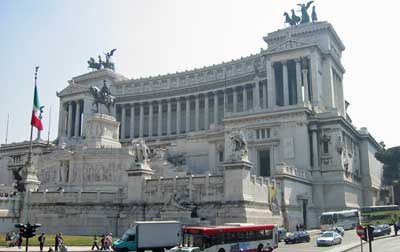
Aside from that it’s just the normal fact that they have updated the timetables as of December 2023 and have a few promotions going on, but those usually don’t happen over the busy summer season.
Eurail passes are now available in a mobile version
Until very recently, Eurail Passes were only available in paper form and they were quite confusing at first. You’d get a pass with a series of empty boxes on it and you’d need to enter your trip before you’d use your pass each day and then have the first conductor verify it. If you lost your ticket (and this was not uncommon), it was a whole ordeal to attempt to get a replacement.
Again in 2024 Eurail offers a fully mobile version that is delivered instantly to your mobile device with no delivery fee. And if you somehow lose your phone, you can resume using your Pass on your replacement with no extra headache. This is MUCH more convenient in every way and as long as you can keep track of your phone you’ll always have your train pass handy.
If your trip will be 2 weeks or less, a Eurail Pass probably won't be worth it
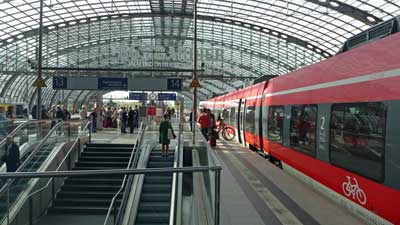
Eurail Passes are ideal for travelers on longer trips, and especially those who don’t want to plan all of their destinations and dates far in advance. If you have your itinerary pretty much planned out and you don’t require much flexibility, you’ll be far better off just locking in your dates and buying your train tickets as early as you can. Again, they can be surprisingly cheap if you buy 2 to 4 months out.
If you are age 27 or younger, a Eurail Pass is probably worth it

With this in mind, if you are lucky enough to still be 27 or younger, you should seriously think about getting a Eurail Global Pass Youth, partly because the sense of freedom instantly gets more expensive at age 28. The age cutoff was 25 until recently, so this change is a great deal for anyone who will be 26 or 27 at the start of their trip.
You aren’t guaranteed to save money by buying a Youth Eurail Pass, but chances are good that you WILL save money and you’ll definitely save a lot of hassle as well. Especially now that Eurail Passes come in a mobile form, it’s even that much more convenient to just hop aboard any train that is about to leave the station and not worry about buying or even having a ticket. Especially for young people, it can be really fun and exhilarating to literally just walk into a train station with your backpack and look at the departure board and then decide where to go at that moment.
If you are age 60 or over, a Eurail Pass could also be great value
Another fairly recent change is that anyone who is 60 years or older at the start of the use of a Eurail Pass now gets 10% off the normal adult fare. That new discount is going to make this a great value for many travelers who might have been on the fence about buying a full-price pass before.
>>>Check prices on Eurail Passes
If you are planning on traveling in 1st Class anyway, a Eurail Pass is probably worth it
Most 2nd Class trains provide similar comfort and legroom to Business Class airline seats, or at least close enough, so for most people it’s not worth the added expense for 1st Class. However, if you are rich or elderly or fear contact with strangers, a 1st Class Eurail Pass is probably worth it no matter what.
Not only do you get much more comfort and legroom in 1st Class, with only 3 seats across instead of 4, but there is another advantage to 1st Class on European trains. Since it’s mostly business travelers and wealthy people traveling in 1st Class, the carriages are almost always mostly empty except in the mornings and late afternoons between large cities. In 2nd Class the only available seats might be two seats in an 8-seat cabin with all the other seats taken up by a loud family or a group of rowdy friends. In 1st Class you are all but guaranteed a peaceful ride, and usually plenty of empty seats from which to choose.
A hidden Eurail Pass benefit: Making extra stops on travel days for free
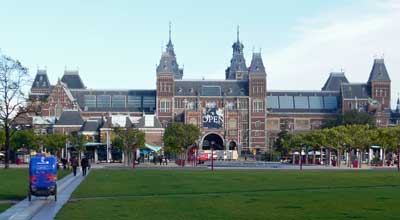
Brussels in particular is one I recommend a short stop in because the small historic center around what they called the Grand Place is amazing and gorgeous, while the rest of the city is rather boring by European standards. With a Eurail Pass you can jump off the train in Brussels and explore the city center for a few hours (luggage storage is cheap and easy) and maybe have lunch, and then hop on a later train to complete your journey to Amsterdam. There are opportunities like this on many if not most trips between larger cities, and if you buy the point-to-point tickets you have to stay on the train you booked.
Another example is the high-speed train between Barcelona and Madrid, which takes about 2.5 to 3 hours in each direction. There are some interesting cities in between, but in this case you could take a morning train from Barcelona to Madrid and then check into your accommodation, and then hop on another train from Madrid to Toledo, which takes about 30 minutes and costs €14 each way. Toledo is a historic and fascinating town, but it’s also pretty small and you can explore the main sights in an afternoon. With a Flexi Eurail Pass where you buy a certain number of travel days, you can save more money by adding on these sorts of nearby stops on travel days.
If you'll be touring major cities within ONE country, a single-country pass might be perfect, and Second Class passes are available for all ages
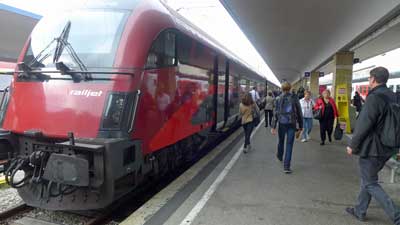
Single-country passes are still available and they MIGHT be good value for you, but it depends on which country and how much traveling you’ll be doing. If you plan on going all over a larger country such as Germany, France, or Spain, and especially if you like to make plans as you go, a Single-country pass for one of those might be your best deal. On the other hand, smaller countries (such as the Netherlands) or countries where train tickets are already fairly cheap (such as Italy) might be harder to get value out of. Long story short, for single-country passes you really need to check fares of the places you plan on going and see how they add up compared to the pass.
>>>Check prices for Single Country Passes
Eurostar (between London and Paris or Brussels or Amsterdam) tickets are now included for Eurail Pass holders for a €30 reservation fee
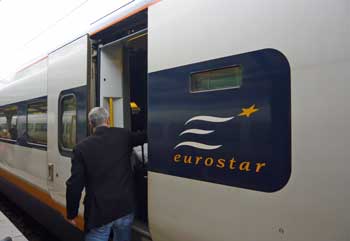
Our recent tests show that Eurostar fares one-way from London to Paris can be as low as €49 if you book about 3 months out, or as expensive as €214 for the same seat if you wait until the day of travel to buy. Round-trip/return tickets can be even cheaper if there is a promotion running.
>>>Check Eurostar prices
If you are on a really low budget, a Eurail Pass isn't a good idea
Here’s the thing. As we’ll discuss below, there are many potential benefits to Eurail Passes, and they will often save you money, but they do cost a lot and they only really save you money when traveling in the more expensive countries.
So let’s say you have a flight to Rome and then US$2,000 to last you a month after you arrive. Buying a Eurail Pass before you go would help you see a lot in that month, but you’d practically need to sleep in parks for your funds to last the whole time. You’d be better off moving slowly in the southern countries, or just in Italy itself, as a way to have the best holiday on your budget. You might also be tempted to use a Eurail Pass mostly on night trains so you can save the cost of a hotel or hostel, but those aren’t ideal for most of us.
The cheapest way to get around Europe by rail is to buy all train tickets online at least a couple months in advance. The fares are low, but they are non-refundable and non-changeable. See how far in advance you should buy train tickets to get those attractive fares.
If more than a little of your travel will be in eastern Europe, a Eurail Pass isn't a good idea
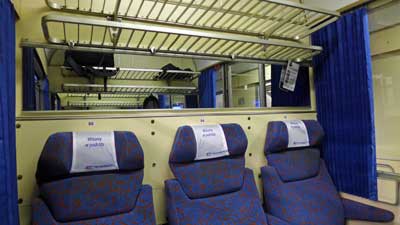
The good news is that the trains operating in this region, and the buses that operate alongside and/or where trains aren’t running, are quite cheap. So if any significant part of your trip will be into this region, a rail pass doesn’t make sense.
Basic types of Eurail Passes
Long gone are the days of the simple options, replaced by specialized passes that are meant to appeal to different styles. It should be pretty easy to figure out which is best for you, and then keep going down the page to decide if it’s worth it at all.
Eurail Global Pass – 4,5, or 7 days within 1 month or 10 days within 2 months
Until recently the minimum number of travel days with 10 days within 2 months, but now you can buy as few as 4 days within 1 month for about €200 to €250 (for first class). This can actually be an interesting strategy if you are planning many shorter and cheaper trips (like within Italy or Eastern Europe), and also 4 or 5 longer trips such as Berlin to Amsterdam. This way you can buy only 4 or 5 travel days and only use them for your most expensive travel days, and just pay as you go or buy cheap advance tickets for your other journeys.
Eurail Global Pass – 15 to 90 consecutive days
This variation allows for unlimited travel on the system for between 15 and 90 total days. They are really only a good idea for people who are certain they are going to travel very often, with much of it being in the north of Europe. The problem with them is that if you really try to get your money’s worth, you will probably ruin your trip by spending too much time on trains in general. On the other hand, if you will be in Europe for 2 or 3 months and plan on traveling around a lot, you can get a LOT of use out of a longer pass. The 3-month pass is around €900 so it’s literally about €10 per day. Imagine going back and forth between Berlin and Munich or Barcelona and Madrid for €10 per day!
One Country Pass
Obviously these are for travel within one country only. Again, they can be great deals if you plan on extensively moving around one particular country.
Where to buy your Eurail Pass
Eurail Passes are cheapest and easiest to buy online, primarily from two main sources which offer all the same products at the exact same prices:
This is a reliable company based in the Netherlands but with fulfillment offices in the US and Ireland. Price of Travel is a partner with this company, and if you use the links of this site we earn a small commission to help keep this site online. Eurail.com is usually cheaper than RailEurope (discussed below) by the way.
They were founded in the 1930s and are based in New York, but owned primarily by the French and Swiss rail companies. They offer free shipping (2 to 3 business days) on all orders of US$399 or more, although now that a mobile version is available, this is meaningless. Price of Travel is a partner with this company, and if you use the links of this site we earn a small commission to help keep this site online.
Reservations on European trains for rail pass holders
For most of the fastest trains between major cities you’ll need to reserve a seat even with a rail pass. It can usually be done just before you leave and the cost is usually around €5. Here’s a full list of which European trains require reservations and which don’t.
Reservations are required on all intercity (longer distance) trains in or involving France, Spain, Switzerland, and Italy. For most trains in Germany, Austria, Netherlands, Belgium, and most of eastern Europe, you can usually find trains that don’t require seat reservations. Often, if you don’t leave until after 9:30am or so, you can ride on any train with no seat reservation, but you have to research each leg to be sure.
How to determine which trains require seat reservations, and also get schedules
You can click on the link just above this section for a list of countries and their seat-reservation policies, but in some cases it’s actually a bit more complicated than that. For example, you can generally ride without a seat reservation on fast ICE (Inter City Express) trains in Germany if you depart after 09:30 in the morning. They do this to free up seats for business travelers who pay full fare, and they don’t mind filling up seats with rail pass holders on trains leaving a bit later.
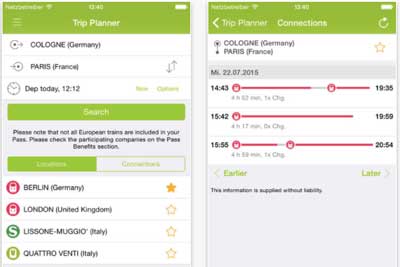
Night trains in Europe are making a comeback
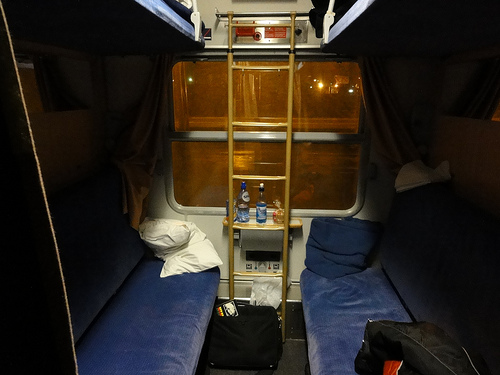
Fast forward to 2024 and night trains are not only expanding service, but they are very trendy. Some of it is nostalgia for the older way of getting around, but most of it is for environmental purposes combined with European hatred for the “low cost airline” experience with RyanAir and Easy Jet etc.
Personally I’m still not a fan of night trains because I find it difficult to sleep on them since they often get decoupled at interim stations in the middle of the night and then coupled onto other trains coming from other places, and I can’t sleep through any of that. But still, they are worth looking into and they are fun to try at least once.
A bit of warning that they tend not to be cheap and even if you have a Eurail Pass you’ll almost certainly want to book a sleeping cabin with a bunk or couchette, and that will come at an extra fee. On the other hand, if you are the sort of person who can sleep sitting upright in a normal seat, then that won’t cost any extra on most overnight trains.
Factors to consider when thinking about any Eurail Pass
Assuming you know which Eurail Saver Pass option is the best one for your type of trip by now, we’ll go over the main factors that should help you decide whether it’s the best idea for you.
Eurail Passes are best for standard ‘medium length’ journeys

However, if you are determined to travel between Rome and Paris, it’s about a 14-hour journey that will almost certainly be overnight. In this case, a cheap plane ticket is probably better, although taking shorter hops on the train is even better, so spend a day or two in Milan or Lyon on the way instead.
And of course, if you prefer to stop in various small towns between the big ones, then a Eurail Pass won’t pay off, except for the traditional kind for unlimited travel in a given period.
Eurail Passes are better value in northern Europe, France, and Spain, and poor value in Italy
Once you do a bit of research you’ll quickly learn that train tickets (and almost everything else) are much more expensive in Germany, Netherlands, Denmark, Sweden, Norway, and Finland than they are in Greece, Italy, Portugal, and Spain. With this in mind, the regional passes can make sense if you are spending time in the south, but the Global Passes almost certainly won’t. Train tickets in Spain used to be fairly cheap, but in recent years they’ve added new high-speed trains between the major cities, and these are quite expensive.
Unlike most other countries, Italy really subsidizes its train tickets so they are quite reasonable even on travel day, and very cheap if you buy a month or more in advance. For example, you can go between Rome and Florence for around €49 if you buy on travel day, and as little as €19 if you buy well in advance. In most other countries, fares are double or triple that much for similar rides.
So consider your planned itinerary. If more than half of it is in the Mediterranean countries then look into a Regional Pass or just buy tickets as you go, because they tend to be pretty cheap. But if you are planning on spending at least half your time in Paris and places to the north of it, then a Eurail Pass is probably a money saver because those tickets are expensive.
Trains are almost always better than planes
Flying sucks, even in Europe
Until you’ve experienced the joy of traveling around Europe by train you might be tempted to “maximize” your time by flying low-cost airlines between each city. This would be a mistake. In order to get truly cheap airfares you have to purchase long in advance, buying non-refundable tickets. You might also have to commit to flights in the very early morning or in the late evening, because cheap tickets on convenient flights sell out quickly.
And again, most European airports are around an hour outside of the city. They are often on the main train lines, which helps, but still you have to deal with the madness of security and also try to get there at least two hours early. From one city center to any other city center it’s about 5 hours minimum, even if they are close, and those are pretty miserable hours.
Train travel is a positive experience

Not only are all the seats comfortable on trains, but you also have an interesting view most of the time. Better still, trains deposit you in the heart of every city, which is usually the neighborhood with the cheapest hotels and food. It’s a wonderful feeling to step off a relaxing train ride, buy a hot dog or sandwich at a local shop, and then be in your hotel room only about 10 minutes later.
Eurail Passes are better than train tickets alone
As someone who enjoys the process of crunching numbers and looking for value, I have to also mention that I’d buy a Eurail Pass even if it seemed like it would cost a bit more than the individual tickets. With a pass you get an extra element of freedom that is worth a lot more than you might expect until you’ve used one.
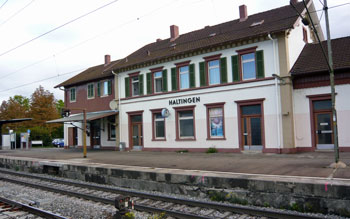
Let’s say you are heading from Amsterdam to Hamburg tomorrow morning. The 09:00 train you planned for might seem a bit ambitious after a long night out, so you can instead opt for the 10:00 or 11:00 train. As long as you walk into Centraal Station 10 or so minutes before departure, you are on. If you are flying you can’t change your ticket, and if you are buying train tickets as you go you have to be in line at the international desk at the train station at least 30 minutes early, and even then you might miss it if they are busy.
Freedom and getting to feel like a big shot
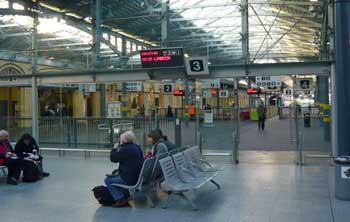
Let’s say you are staying at a hostel in Brussels, and two groups of new friends suggest that you go along with them to their next stops. One group is going to Bruges, which is a short and cheap journey, so you can join them by buying individual tickets (unless you have the unlimited pass, making it free). Then you restart your trip from Bruges, on to your next destination. The other group is headed to Berlin on a night train, which is long and expensive, but with a Eurail Pass you don’t even have to think about the cost. On you go, just like a rich person.
Buying a Eurail Pass is great for those who might run out of money
We all know people who keep meticulous track of every penny they spend, and who are always putting money away for a rainy day. And we all know people who can take a US$100 “entertainment fund” and burn through almost all of it in just a few hours. For the first type of person, a Eurail Pass can help you keep track of expenses, but it’s really the second type of person these are best for.
It’s sad to hear about people who have big plans to see their dream destinations, but they run out of money for transportation halfway into the trip, so they have to just stay put until they fly home. It happens. Locking in your major transportation costs before you leave home, and probably saving money in the process, is a wise move for anyone who isn’t as disciplined as they’d like with their money.
>>>Check prices on Eurail Passes
Bottom line: If you want to keep travel costs down, your choices will usually be a Eurail Pass or buying tickets at least a month or more early
In the last few years, almost every long-distance train ride in Europe has switched to a pricing system similar to low-cost airlines. In other words, tickets go on sale 2 to 6 months ahead of time at very low prices, and they keep getting more expensive as the train fills up and the date approaches. For most trips where a rail pass is possible, this is how things stack up:
Cheapest possible way: Buy advanced (non-refundable, non-changeable) train tickets at least 30 days in advance
Next cheapest way: Buy a Eurail Pass and make seat reservations as you go, usually only a day or less in advance.
Most expensive way: Buy train tickets as you go, or less than a week in advance.
Thinking about it this way should make the choice a bit easier. If you are the type who likes to plan each day and travel segment long before you even leave home, then buy tickets online for the best prices. This can be the best strategy for most shorter trips (10 days or less) because you simply don’t have enough time to change many things as you go anyway.
Buying a Eurail Pass won’t be quite as cheap, but you are buying a LOT of flexibility with the extra money. If you dream of making up your plans as you go, or even making up your plans just a few days in advance, this is almost always your best bet.
But if you wait too long, and just show up looking to buy train tickets as you go, they are going to cost a fortune. As recently as only a few years ago all seats would be the same price on many rail systems, so you could always just wing it. When each country computerized its rail systems so they can sell advanced tickets cheaper, they also had to keep track of seat reservations, so the whole pricing structure had changed to favor advanced ticket buyers and rail pass holders over those who’d prefer to just hop on any train as it is leaving the station.
Have a rail pass or itinerary question of your own?
It wasn’t planned but scores of people began asking me rail pass and itinerary questions at the bottom of this article and a few others. I’m happy to keep answering them and now I’m trying to organize them better as well so they are easier for other people to find.
If you have a question about specific types of European rail passes, please ask it in the comments below.
But if you have a question more about a European itinerary or other non-rail-pass questions, please click over to the European itineraries Q & A article and ask in the comments of that one.

Hi Roger, big thanks for writing this article! I’m planning on backpacking Europe on May2014 for three months. I just want to make things clear on the travel days and riding the trains; does that mean you can use your pass as much as you want in that 24 hour, is that considered as one travel day? or everytime you use your pass, that’s counted as a travel day? I’m 21years old and i’m thinking of going to these places:
Greece (Nafplio, Santorini, Athens)
Bulgaria (Buzludzha, Sozopol, Balchik, Ledenika, Rhodopes, Sofia)
Romania (Bran, Sighisoara, Timisoara, Prahova, Sibiu, Brasov, sapanta, suceava)
Croatia (Dubrovnik, Split, Korcula)
Italy (Venice, Barrea, Florence, Portofino, Rome, Milan)
Poland (Krakow, Bieszczandy, Pomerania)
Austria (Vienna, Hallstatt, Innsbruck, Salszburg, Melk)
France (Chenoeau, Paris, Colmar, Giverny)
Belgium (Bruges, Brussels, Ghent)
Spain (Barcelona, Ronda)
I dont know which global pass to get, would the 3months continuous pass be worth it, or 15days within 2months pass be a better choice?
Marie,
I’m always happy to hear that this information is helpful.
Okay, so on these rail passes, a “travel day” is basically the same as a calendar day rather than a 24-hour period. So if you start in Venice and take a morning train to Milan, and walk around the city for a few hours before taking another train in the afternoon to Turin, that’s one travel day. You can even take a night train and as long as it leaves after 7pm and arrives the following morning, you only mark the arrival date as a “travel day,” so you could theoretically take another train that afternoon and it would still be the same travel day. However, you can’t take an afternoon train one day and a morning train the next and count it as one day, even if it’s all within a 24-hour period. Basically, when you validate your pass for a day, you write in the date and have the first conductor stamp it, and all the other conductors just look at it to verify.
Now on to your itinerary: I think you have too many stops planned, even for 3 months. It looks like over 40 cities, which means you’d be traveling every other day for 3 full months. I think it’s good to research all the possibilities and have options as you move along, but I’d really recommend against actually trying to see all these places on one trip. Even for a 3-month trip, it’s best to plan 3 nights or more in most stops, except for a few small cities where 1 or 2 is enough to see everything you want to see.
In Greece there is really no train service so you’ll want to take buses and ferries. In Bulgaria, Croatia, and Romania the train service is slow and infrequent so buses are the better option. Fortunately, the buses in that part of Europe are cheap and fairly comfortable, plus there are frequent departures. Once you get to Split you can start with trains towards Italy, and from then on they are the way to go.
So with that in mind, a 15 days out of 60 pass is probably best for you. Some of your (planned) trips are quite short so for those you could just buy tickets as you go, and only use the pass for the 15 longest rides. That would save you quite a bit of money, especially in France and on your way to Spain.
But seriously, I think you have too many somewhat obscure cities on this list, including quite a few I’ve never even heard of even though I’ve been to all these countries. Not to lecture you or anything, but a big “Europe trip” like this is at its best when you have as many contrasts as possible along the way. I’m sure those towns in Bulgaria will all be fairly similar, and instead of some of those you might add Prague and Budapest, which are both major highlights on any trip.
No matter how you do it, I’m sure it’ll be incredible, and feel free to ask any other questions you might have as time goes on. -Roger
Thank you so much! I trimmed down my itinerary too, thanks for the tip too. by any chance, do you know where the cheapest destination to start, and when is the right time to buy a plane ticket to Europe for summer?
Marie,
I’m glad you have focused your itinerary for this trip. The cheapest cities in Europe are Bucharest and Sofia, but neither has cheap flights coming into it from any real distance. Your best options would probably be either to fly into Athens (if you are coming from, say, North America) and start there, or fly into Rome and then look into a low cost airline into Bulgaria or Romania. But really, it’s usually best just to fly into the most remote city you will visit and then do the others in order coming back to a big airport for a flight home.
For international flights the cheapest time is about 11 weeks before the outbound flight. So if you check now for a flight 9 months from now, it’ll be expensive, and the airfare will probably start dropping about 4 months out. -Roger
Hi Roger,
My wife and I are looking to spend 3 months in Europe starting in France.
Paris, Versailles, Luxembourg City, Bruges, Brussels, Antwerp, Rotterdam, Amsterdam, Dusseldorf, Frankfurt, Krakow, Lithuania, Latvia, Estonia, Finland, Sweden, Norway, Iceland and Denmark.
Our plans change, and we find ourselves spending longer in places we find interesting and leave out places that don’t seem to interest us. We like to be able to catch ferries (especially around Finland and Sweden by the looks of the map).
I’m worried that if we by a Pass then it will hinder our travels but simultaneously I worry that if we don’t then it would end up costing us a big difference if we were to by each individual ticket.
I’m still unsure of how the pass works. Can you simply board any train at anytime, or do you need to present your pass at the ticket office and be given a ticket? I’m wondering if it would save time by not having ti line up.
Would we automatically have reserved seats on each train ride?
My head is spinning trying to figure out what we should do. I hope to hear from you and appreciate any feed back you can offer.
We are 30 years of age and will be travelling with large backpacks.
Cheers
Matt,
That sounds like an epic trip. First off, I don’t think you should buy a rail pass for the whole thing. They are really best for people who want to cover a lot of ground in a relatively short time. It appears that you’ll be making mostly short hops, albeit through otherwise expensive countries.
On the other hand, you might look into buying a rail pass for the northern part of your trip, starting in Amsterdam. Those rail journeys in the Nordic countries can be insanely expensive, partly because they tend to be very long. If you just decide to wing it and cruise around those countries on a whim, you could spend US$150 or more for each journey, per person.
For all of your stops between Paris and Amsterdam, they are short rides (1 to 3 hours each) and if you buy tickets online at least a few days in advance (through the official country rail sites), they won’t cost too much each. Or even if they do seem pricey, a rail pass to cover them would cost even more.
So if you sort of plan out your proposed itinerary starting in Amsterdam and going north, it might be wise to buy one of the regional rail passes that cover those countries. You can buy a pass and then validate it (begin using it) up to 6 months later, which is handy since you can’t buy them once you are in Europe. By the way, you put Iceland on your list, and I assume you realize that it’s a long way from the others and there are no trains. If you figure out about how many stops you think you’ll do in the north, I can help you find the right pass if one fits well for it.
As for how they work, it used to be that you could just hop on any train and show the conductor your pass when they checked tickets, but now on most of the popular routes for tourists (longer inter-city trains) you need a seat reservation. These countries have all computerized and are doing load balancing on the longer rides, which is mostly a good thing, although it does take some of the spontaneity out of using a pass. Seat reservations usually cost around €5 each and you get them from the same ticket counters in each train station. You can usually get them just before the train leaves because few trains sell out, but I prefer to get them the day before so I can arrive at the train station just before the train pulls out.
More good news is that a rail pass will cover many of the popular ferry rides in the north, or at least give you a discount. Once you decide your planned route you can check the rail pass site to see if ferries are covered, which they probably will be.
Let me know if you have any other questions or want more advice about doing a partial rail pass thing like this. -Roger
Hi Roger, thanks for the helpful input. We have a better idea of our trip now and are trying to figure out how long we should plan to stay at each of our stops. Having said that I’m not sure if we are missing some amazing places in each country (there is so much to research) Is there any places you would recommend doing a day trip to or spending a night more at? Alternatively please let me know your thoughts on our proposed itinerary. We have an additional 9 or 10 days to add to this trip, and I thinking perhaps visiting Antwerp for a day trip on our journey to Rotterdam. We are happy to push on at a fast pace through some of these countries but we would like a good amount of downtime at some stunning cities too such as Amsterdam, Copenhagen, and I hear Stockholm is beautiful. I’m also trying to look into how long we would want to spend in Iceland too. Also to keep things interesting we are also looking at a trip into Russia. Would 4 nights for St. Petersburg be a good timeframe? Much to see? Interesting city to spend some time just enjoying the culture?
8 nights Paris (already booked)
3 nights Luxembourg City
train via Brussels for a day tip – lunch & spend a few hours sight-seeing continue to Bruges
3 nights Bruges
2 nights Antwerp
2 nights Rotterdam
4 nights Amsterdam
3 nights Dusseldorf
3 nights Frankfurt (family visit)
3 nights Berlin (family visit, have visited once before)
4 nights Krakow
2 nights Warsaw
2 nights Minsk
2 nights Vilnius
3 nights Riga
3 nights Tallinn
4 nights St. Petersburg
3 nights Helsinki
3 nights Oulu
2 nights Rovaniemi
3 nights Tromso
3 nights Longyearbyen (flight)
3 nights Oslo (flight from Longyearbyen or train from Tromoso)
3 nights Stockholm
5 nights Copenhagen
4 nights Reykjvik (flight)
Flight to Copenhagen and fly out of Europe
As far as the train pass goes, we are thinking a 5 country, 6/8/10 days in 60 days.
Germany, Finland, Sweden, Norway, Denmark
So much to consider, I’d appreciate your wisdom.
Cheers
Matt,
I think your itinerary is looking good, and you are really not rushing anywhere. Three nights in Luxumbourg City is actually one or two more than most people spend, but with so many stops I agree that it’s wise to stay two days or more everywhere, so you always have full sightseeing days in each place.
I’ve yet to make it into Russia, partly because I’m an American and they make the visa process quite slow, confusing, and expensive, according to most people. St. Petersburg is certainly on my list, and I think I’d shoot for 3 nights (partly because I don’t hear too many people raving about it and wishing they could stay longer). Starting in Warsaw you’ll probably find that buses are better than trains until you get to Helsinki. With that in mind, I think you’ve made an ideal choice of rail passes, and that’ll probably save you a bundle.
The feeling of not knowing what you might be missing along the way is familiar to me. In cases like that, I think there is no substitute for a real guidebook. For example, Iceland is quite a mysterious place so I bought the Lonely Planet Iceland for my iPad and I’m incredibly glad that I did. Those editors know pretty much all the highlights and they recommend all the best ones. I also love Rick Steves’ guides because he and his editors go even further in that they give readers much deeper coverage of the best things, and they leave out the things that are best ignored.
Also, three nights in Oslo sounds like a lot, especially considering how insanely expensive it is. Most travelers only spend a day or so in Oslo on the way to and from the fjords and other wilderness. Stockholm and Copenhagen are indeed beautiful, though 5 days in Copenhagen seems like a long time, and it’s too expensive of a place to just chill out in, at least for most travelers.
Speaking of chilling out, if I were to be planning this itinerary for myself, I think I’d move faster through the expensive cities and add in perhaps three longer “chill out breaks” after every two weeks on the road. As in, in a city like Krakow, plan two days to see the sights but three days to just do laundry and relax to let the previous weeks sink in. I actually did that in Krakow last summer, staying 8 nights, which was wonderful because it’s a nice city and it’s very cheap. In other words, build in a few rest stops in cheaper mellower places, and push through the expensive cities in two days or so.
I just did my first Iceland visit about a month ago, and I can’t wait to go back. I spent 9 days, including 7 days driving a rented car around the Ring Road. In four days you’ll only have time to see Reykjavik (which isn’t all that interesting) and spend a couple days going along the southern coast. I normally prefer public transportation whenever possible, but in Iceland I was incredibly glad that I rented a car because you can go anywhere at any time. The bus service there is very limited, and you might have to be at the bus stop at 6:30am to catch the only bus of the day to where you want to go.
Hopefully some of the above helps. And feel free to write back with other questions now or as the trip draws near. -Roger
Hi Roger, I’m back with a couple of questions if I may.
We went ahead and purchased 10 x 4 countries RailPass (Denmark, Norway, Sweden, and Finland). We kinda ran out of time and needed to purchase the pass and have it posted to an address where we could pick it up in a couple of weeks time.
This is our Scandinavia travel plans (probably)
Copenhagen
Malmö
Gothenburg
Helsinki
Oulu
Rovaniemi
Tromsø
Trondheim
Oslo
Copenhagen
Is it true that we can use the pass to take the ferry from Stockholm to Helsinki?
Our travel date would be 16th December
Vessle: M/S Silja Serenade
Departure Time: 17:00pm
Arrival Time: 10:30am
Travel Time: 16 30min
If this trip can be used with the RailPass, will this trip count as 1 use of the pass, or because it’s over night will it be 2 rides?
When making the booking online am I able to indicate that we have a Railpass, or do we get reimbursed on the travel day?
Traveling by bus from Rovaniemi to Tromsø, with a possible stop for a night along the way. Will the RailPass cover these trips? Also any need to book in advance these trips if we are looking at traveling on or around the 24th December?
At this stage we are looking at traveling during the day form Helsinki to Oulu, but if we decide to take the Night Train, would that take 2 day passes to cover the trip because it’s over two dates?
We are looking at taking the Hurtigruten from Tromsø to Trondheim. Is there a discount for this booking with the RailPass?
Also from Oslo to Copenhagen, what would be your choice of travel plan? Train via Gothenburg, or take the ferry via a nights stay at Aarhus and continue to Copenhagen the next day?
Thanks heaps 🙂
Matt,
I haven’t spent much time using rail passes to get around the Nordic countries so I’d be looking online for answers to most of these questions as well. As for the ferry, it looks like you can get 50% off between Stockholm and Helsinki on Viking (and that doesn’t use a travel day), but I don’t see anything for the ship you mention.
Also, I don’t see anything that would help for a bus from Rovaniemi to Tromsø for rail pass holders. If you go to the site where you bought your pass, such as eurail.com, you’ll be able to see a page for each country that lists the ferries, buses, and other things that passholders get free or at a discount.
The good news about night trains is that they only use one travel day. As long as the train leaves after 7pm and arrives after midnight (in other words, it’s an official “night train”) then you only use a travel day for the arrival date. This means that you can do a day trip or another journey on that same arrival day and it’ll still only be one travel day.
From Oslo to Copenhagen it looks like the train takes 8 hours and the ferry takes double that, so I’d do the train. The scenery should be lovely (especially compared to an overnight ferry) and 8 hours isn’t bad on those comfortable trains.
Feel free to ask any other questions, and sorry not all of these were in my wheelhouse. -Roger
Hi Roger
We are a group of 15 people travelling together. I was thinking about buying the global pass. Just one question, can you travel with that pass within a country? We want to visit a few cities in Switzerland and Austria.
Thank you
Sophia,
Yes you can. A Global Pass covers all international AND domestic train travel within the 25 or so included countries. However, it’s worth mentioning that Switzerland has one or two private train lines that run vintage trains up mountains and those are only partially covered by Eurail Passes. -Roger
This site is excellent!! My wife and I (both over 30) are just starting to plan a 2-week trip late in the summer of 2014. We plan on flying into Oslo and working our way south into Germany by way of Stockholm, and Copenhagen. Given the itinerary we have started to formulate, which rail option would be best for us?
Oslo (arrival flight)/surrounding area – 3 days
Stockholm – 2 days
Copenhagen – 1 day
Trier/surrounding – 3 days
Berlin (departure flight) – 4 days
Nick,
Once again, I’m always happy to hear that this site and its information is helping people.
On this itinerary, it appears that you only have 4 journeys planned (and that seems sensible), so a rail pass isn’t likely to be good value. The shortest durations are 5 journeys and that’s in no more than 3 countries, but you’re doing at least 4. So my recommendation would be to just buy the train tickets individually. At least some of these trips should be cheaper if you buy early, and I believe the national official rail sites for these countries start selling six months in advance, so I’d try that early next year. If you wait until you get there then these legs would all be very expensive if purchased at the station on the day. -Roger
Hi Roger, My 21 year old daughter and I will be travelling from Munich to Venice at the end of December to spend New Year with family staying 5-6 nights, then on to Paris for 4-5 nights and back to Munich where she works. Can you please advise on passes and your opinion on the best way to travel at that time of year. Many Thanks, Mary
Mary, with only 4 train journeys, a rail pass isn’t really an option that makes sense. To be honest, I’d look into flying for any or all of those journeys. Each of them is a long train ride that would cost US$100 per person or more each way, and if you book flights in advance you can probably do better. I’m a huge fan of European railways, but flights are often cheaper and at that time of year the scenery isn’t great on the trains anyway. So I’d recommend looking into the price of flights on lowcost carriers (which are quite low if booked in advance) and doing the rest on trains by also booking in advance on the national rail sites. -Roger
Roger,
Your site is fantastic. My husband and I greatly appreciate all of the information you have provided. This will be our first trip to Europe, and we are still having difficulties deciding the best travel options. It sounds like the Eurail Select Pass is our best option, but we just want to make sure before purchasing. We are also thinking of traveling by car and need your opinion train vs. car. We are traveling between December 19-27. Our itinerary is as follows:
Day 1- Paris
Day 2-Switzerland
Day 3-Fussen/Hohenschwangau
Day 4-Munich/Nuremberg
Day 5-Prague
Day 6-Rothenberg
Day7-Frankfurt
Day 8-Kassel
Day 9-Fly out from Hannover
Any help would be much appreciated.
Stephanie,
Before we discuss trains vs. rental cars in Europe, I’m going to encourage you to reconsider this itinerary. It appears that you are literally going to be changing cities (or even countries) every day, which means that you’d be spending most of your daylight hours in transit. Unless you are going on some kind of scavenger hunt, I’d cut out half the stops and spend more time in the others. Also, keep in mind that in late December the sun is only up from about 8:30am until 4pm in that region.
Switzerland can be partially driven through in a day, but that’s all you’d be doing.
Spend at least two days in Paris, and then go to Munich, with a quick stop at the castles near Fussen if you have the energy. The Prague for a couple days before heading back to Hannover. Rothenburg can be seen and even appreciated in only a few hours if your schedule is tight, and I’d skip Frankfurt altogether unless there is something specific you want to see there.
Once you have a less crazy itinerary, then trains are almost certainly still the better choice. Driving in countries you are new to and where you don’t speak the native language is stressful, and the petrol is expensive. Then parking is usually a big problem as well, unless you are doing things like touring wineries.
If you simplify your itinerary then I’ll be happy to offer more advice once you do. -Roger
Well maybe I should say this is my first time to Europe. My husband speaks German fluently and lived in Hamburg for several years. He does have his European driver’s license as well. If we did the trains, we were hoping to take night trains to the places we went, but we do not know how the night trains work or if they are included with the Eurail passes.
Also, are the city transportation trains included in the Eurail pass?
Frankfurt and Rothenberg were optional on our list, so we are willing to skip them.
Thank you for your help and advice. It is greatly appreciated.
Stephanie,
Well, yes, a Eurail Pass does indeed cover the night trains, although you’ll also need to reserve a seat or a bunk (couchette) for an additional cost of €5 or so for a seat or €20 to €30 for a couchette. Your husband no doubt knows about how night trains work, but the quick version is this: For virtually all major city pairs that are between 6 and 12 hours apart, there is exactly one night train between them, usually leaving around 10pm to 11pm. They take longer than day trains because they usually stop in the middle of the night to swap carriages with other trains.
So you could do night trains, but honestly for most people they aren’t all that refreshing. For example, I’m lucky to get 2 hours total sleep on them because I’m a light sleeper and they bounce around quite a bit, and when they swap carriages it’s even more jarring. If you both are the type who can pass out anywhere and you don’t need a shower then they could work.
Driving might be the better option, though I’d still encourage you to scale back your number of destinations and try to spend at least 2 nights in each place you go, except for maybe 1 night in a small town like Rothenburg ob der Tauber. -Roger
Roger! You are the man, I have been using your site for every detail for my trip next week and it has been more than helpful, thanks! I have been reading all your comments and Im still hung up on getting a eurail pass or not, because of cheap flights/negative feedback I have been reading about it.I am going to be backpacking by myself for 30 days or more, kind of up in the air. I am flying into Barcelona (4days), then hitting south of france (st tropez,cannes (3 days)), Italy(florence/Venice (4 days)), Fly into budapest(2-3days), Munich (3 days), Prague (3 days), then up to berlin (2-3 days), to amsterdam (2days), Paris (3 days), then finish off in Switzerland (3 days). Should I just book trains when I get there or should I get a eurail pass and hope for the best… Thanks again for the info and keep up the good work!
-Mike
Mike,
I’m happy to hear that the site has been a help in trip planning. Unfortunately, most of the trains you have in mind are quite expensive when bought at the station. It looks like you have at least 11 journeys in mind, or maybe a few more, so what I’d recommend is the Global Pass with 10 travel days out of 2 months. It’s cheaper than the 30 consecutive days pass, and it allows you to use it on your 10 most expensive trips, while paying for the cheaper ones out of pocket.
Those legs like Berlin to Amsterdam to Paris and into Switzerland would be close to €100 each in 2nd Class if you buy just before you go. Hopefully you have enough time to order a pass before you leave, as I honestly think it will save you money and add a bit more freedom. When each new leg adds €90 to get there, many people start thinking about skipping some of them, but with a Eurail Pass you’ve locked in a lower fare so you can go anywhere your heart desires (although you’ll need a seat reservation for most of these, and they are around €5 each). Bon voyage. -Roger
Hi Roger,
Great summary for the Eurail travel / passes !
We are 2 pax planning a 2-week trip from 1 october 13 flying into Rome/Italy and departing in from Zurich/Switerland. We plan to travels in main cities by fast trains (rome, florence, venice, milan, zermatt, luzern, zurich) with the itenary as shown below:
Trip Itenary:
1. Fly in to Rome (2 nights) – Oct 1 to 3 – City walk/tour + Vatican
2. Train – Rome to Florence (4 nights) – Oct 3 to 7 – City walk/tour + the outlet Mall + Pisa + Cinque Terra + Siena
3. Train – Florence to Venice (2 nights) – Oct 7 to 9 – City walk/tour + Canal ride + Island tour
4. Train – Venice to Milan (1 night) – Oct 9 to 10 – City tour/activity
5. Train – Milan (or nearby city) to Switzerland (Zermatt, Matterhorn, 1 night) – Oct 10 – 11 – Mountain tour/activity
6. Train – Zermatt (or nearby) to Luzern (or alternative city, 1 night) – Oct 11 to 12 – City/lake tour/activity
7. Train – uzern (or alternative city) to Zurich (2 nights) – Oct 12 to 14 – City tour/activity
8. Fly out from Zurich airport (depart) – Oct 14
Based on the itenary, we would like to seek your advise/comment on the followings:
1. There is no 2 country eurail pass for italy/switzerland, so we are looking at getting the one country eurail savers pass for Italy, is there such a pass ? and does it make sense for Italy travel?
2. For Switzerland travel, is there a similar country saver pass? Or any other suitable alternatives? Given only about 4 main trips between city/airport.
3. For Italy one country savers pass, train seat reservations is required for fast trains, right? Can these be reserved online and how easy it is to changed the travel dates/time ? What are the mandatory charges that will be applied ?
4. Can this italy pass be used for regional trains especially around Florence ? Any additional charges required ?
5. We are heading to Matterhorn after venice and thought it is appropriate to pass by Milan (since this is a big train station). Is this route possible ? Is there any direct train routes from venice (or nearby city ) to the matterhorn ? Can the italy savers pass be used or get discounts for Italy/switzerland train travel ?
6. Any comment or improvements on the itenary ?
Will appreciate your feedback soonest possible, many Thanks !
Regards
Kelvin T
Kelvin,
Yes, it’s a shame that there is no Italy-Switzerland pass because it would obviously be ideal. Since that isn’t an option, I think you are best off just buying as you go, or better yet, buy in advance on the Italy and Switzerland official rail websites. Each country does offer a single-country Eurail Pass, but for an itinerary like you have in mind I wouldn’t recommend them.
In Italy especially, the pass only pays off if you are going the length of the country, but for those shorter hops you’d actually pay more with a pass. The same is true in Switzerland really.
But in both countries, you should be able to buy at least a few of your tickets online in advance, as long as you are going to the official sites. They discount many tickets early, and the price goes up as the journey approaches. The down side to that is that you are locked in not only to a day but also a time, though it sounds like you are locking all your dates in any way. Also, those journeys in Italy should only be €30 or so each even if you buy the day before, so a pass just doesn’t pay for itself. If you have any more questions, let me know. -Roger
I just want to make sure that it cover all the transportation or not?
Hi Roger,
Me and my husband is travelling to Europe for 14 days and will be covering Zurich, Interlaken, Rome, Venice, Barcelona, Paris & Prague. I just want to know that is Global Pass suitable for this? and does it include all international train, local train and city to city trains and buses?
Shaf,
Yes, a Global Pass will cover all of those places, and if you are doing all of those in 14 days your best option would be the 15-consecutive days option. It covers all international and domestic trains, although in many cases you’ll also need to pay a small fee (usually about €5) for a seat reservation. The only thing a Global Pass won’t cover is public transportation within cities, like bus or metro systems, as those are all run separately. However, on all of those you can get a day pass for around €5, and in places like Interlaken and Venice you might not need a transit pass at all. -Roger